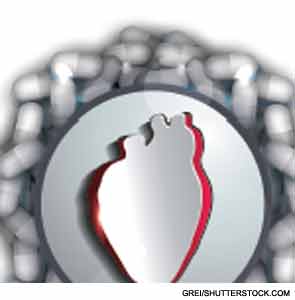Dr. Plutzky says that rheumatologists could consider using the new risk calculator along with the Framingham Risk Score and the Reynolds Risk Score, which includes the patient’s C-reactive protein measurement. Using the three together could give a better “picture of risk when combined with one’s own good judgment,” he says. Determining the level of risk can be particularly challenging for rheumatologists when the patients are young and have inflammatory conditions, he says. For example, a young woman about 29 or 30 years of age who has significant inflammatory disease, has stopped menstruating, and has some hypertension “is not a typical 29- or 30-year-old,” he says. Physician judgment is critical, and decisions about therapy should be made in discussion with the patient, he says.
The new guideline supports that observation, noting the importance of clinical judgment for several patient groups where there are insufficient data from randomized controlled trials: young people with a low estimated 10-year ASCVD risk but a high lifetime ASCVD risk based on single strong factors or multiple risk factors, and individuals with rheumatologic or inflammatory disease. The guideline encourages physicians treating these patients to use their clinical judgment, “weighing potential benefits, adverse effects, drug–drug interactions, and patient preference.”
Dr. Plutzky says that physicians should remember that, “guidelines are exactly that. Guidelines are not law, and one has to rely on clinical judgment to decide what is appropriate in terms of the patient sitting across from you and what works for them.”
According to the new guideline, statin therapy for ASCVD risk reduction would clearly benefit four major groups of people, and the benefit of that therapy would outweigh the risk of adverse events.
Recommended Groups for Treatment
According to the new guideline, statin therapy for ASCVD risk reduction would clearly benefit four major groups of people, and the benefit of that therapy would outweigh the risk of adverse events. These four groups include individuals who:
- Have clinical ASCVD (defined as acute coronary syndromes, or a history of myocardial infarction, stable or unstable angina, coronary or other arterial revascularization, stroke, transient ischemic attack, or peripheral arterial disease presumed to be of atherosclerotic origin);
- Have primary elevations of LDL cholesterol of 190 mg/dL or higher;
- Have diabetes, are 40 to 75 years old with LDL cholesterol from 70 to 189 mg/dL, and without clinical ASCVD; or
- Have no clinical ASCVD or diabetes, have LDL cholesterol from 70 to 189 mg/dL, and have an estimated 10-year ASCVD risk of 7.5% or higher. (Patients in this group who are not being treated with cholesterol-lowering drug therapy should have their 10-year ASCVD risk recalculated every four to six years, according to the guideline.)
Specific information is included in the guideline about when high-, moderate-, and low-intensity statins are recommended, depending on the patient group and level of risk. The high-intensity statins atorvastatin and rosuvastatin have been evaluated in randomized controlled trials and were shown to reduce major cardiovascular events. The guideline also lists moderate-intensity and low-intensity statin therapies that have been evaluated.

